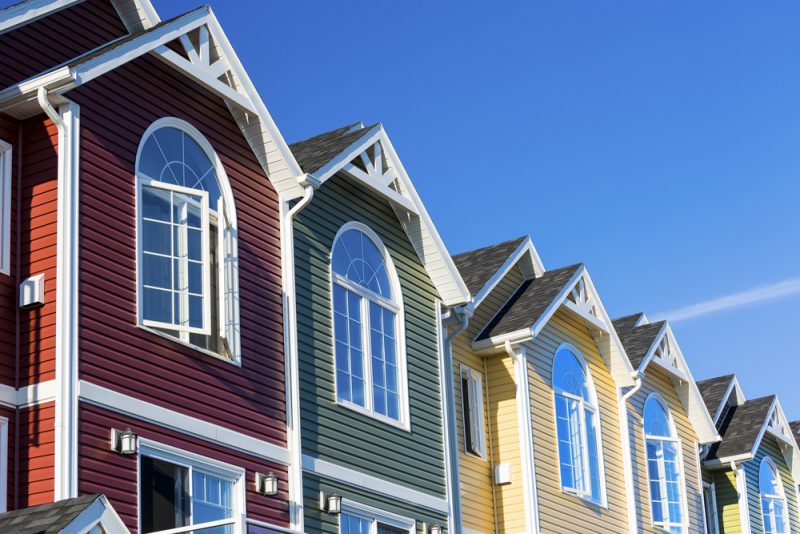Siding Installation & Replacement
Siding Installation & Replacement - We Ensure Best Services
The Best Siding Material for Florida Homes
1.- Composite Siding
Besides engineered wood, composite wood is also a good option for siding. It comprises scrap wood compressed and bound to resins. Therefore, the resulting material is quite strong and durable.
Composite siding is also treated with chemicals to make it resistant to insects and fungi. Most modern composite sidings come ready to paint as they have already been primed. But that doesn’t mean you can install them yourself.
Here are some of the benefits of installing composite siding on your property:
Easy Maintenance: Unlike real wood, composite siding is easier to maintain. So, you don’t have to make much effort to keep the material in its original condition.
Aesthetic: Composite siding also looks great, irrespective of the overall look of your home. If you’re hoping to get something contemporary and eye-catching, composite should be your pick.
Cost-Effective: Although it resembles wood, composite siding is not as expensive as engineered wood. Therefore, it’s a cost-effective solution for homeowners who like the appearance of wood but need a more affordable and low-maintenance option.
Customization: Since composite siding can be customized as per the homeowners’ taste, it’s a great choice for people who aren’t fully satisfied with the limited styles available for most other materials.
Whether you want composite or vinyl or James Hardie siding for your commercial or residential property, let us know, and we’ll come to you to give you a free siding quote.
Learn More About Composite Siding
Call or contact us today for a quote.
If you are considering vinyl siding instead for your home, here are five major advantages of vinyl siding.
- Overall Costs Are Less - In general, vinyl siding is a popular choice for many homeowners because it’s quite cost effective.
- It’s Incredibly Versatile - Today’s vinyl siding comes in hundreds of colors, textures, and profiles to give you complete versatility in designing your dream exterior. Like the look of cedar shakes but prefer the qualities of vinyl? You can find a vinyl replacement that looks so authentic, it fools even the most discriminating eyes.
There are plenty of inexpensive vinyl options for that, too. You can find a vinyl siding style that works with both horizontal and vertical applications for any home profile.
- More Durable Than Other Siding - Vinyl siding is made to withstand the elements, including heavy wind and impact from hail. In addition, vinyl resists excessive moisture, meaning it won’t rot or corrode over time. In many cases, you can get a lifetime warranty on your vinyl siding that is often prorated for up to 50 years on successive owners.
- It’s Virtually Maintenance Free - When it comes to siding, vinyl is about as low maintenance as it gets. Since it resists pests such as termites and blights such as rot, it will keep its original qualities for many years, giving you your money’s worth. Also, you’ll never need to paint your home — a simple cleaning once a year or so is more than adequate to maintain its original good looks. Once your vinyl siding is installed, you won’t have to tax your budget with unexpected costs to keep it looking great.
- Cuts Home Heating and Cooling Costs - Insulated vinyl siding prevents heat loss between the wall studs in exterior walls, a phenomenon known as “thermal bridging.” While most homes have insulation between the wall studs, the studs themselves bleed heat where they come in contact with exterior siding. Insulated vinyl siding places a blanket of protection over the studs, keeping your home warmer in winter and cooler in summer. In addition, insulated vinyl siding may make you eligible for energy tax credits, making it even more economical to install.

Have any questions? Call us Today!
+813-586-4641
Fiber Cement Siding
There are 2 major brands when it comes to fiber cement:
1. James Hardie
2. Allura
t’s the only type of siding that combines the performance of masonry—minimal upkeep; rot-, fire-, and termite-proof; unaffected by wind or cold—with the look of painted wood clapboards, shingles, even stone or brick. Yet fiber cement goes for just a fraction of the cost of these other materials. No wonder nearly 15 percent of new homes choose to use fiber cement or commonly known as hardie siding.
On a basic level, fiber cement is a clever composite of:
- Portland cement (limestone, iron, and clay),
- Wood pulp (cellulose fibers)
- Fly ash
- Water
The combination of these materials makes it both flexible and strong. It cuts to the ideal size, shape, and style for your home’s siding while still holding up against nearly everything mother nature can throw at it.
